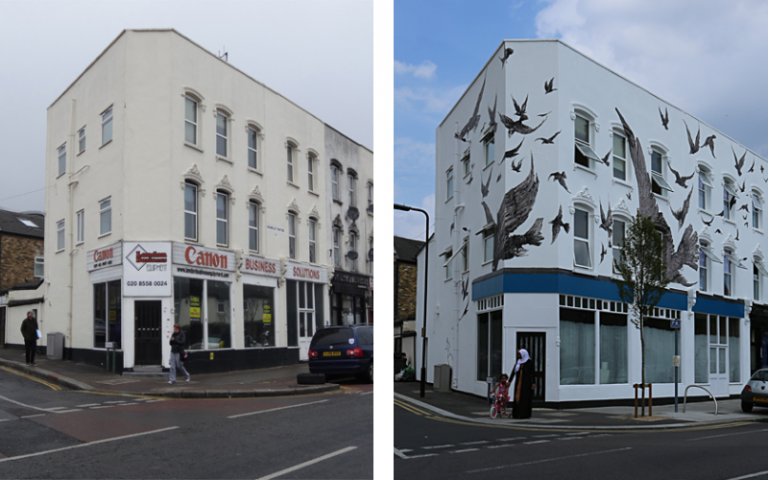Bringing our High Streets back to life
Can we bring the British High Street back to life? With vibrant designs and reimagining of civic spaces, A UCL architect from the Bartlett School of Architecture has worked with local communities to regenerate 20 High Streets across London.

A toxic cocktail of changing consumer behaviour, physical decline – the result of fiscal austerity - and a taxation system that favours out of town retail and multi-nationals has had a dramatic impact on the British High Street.
But one UCL architect has been working to reverse this decline. With dramatic design interventions to shopfronts and building facades, re-purposing of under-used spaces and by providing civic infra-structure and environmental improvements, his aim is to shift the perception of the high street in the eyes of the public and to attract new audiences.
Working closely with local communities, Dr Jan Kattein of The Bartlett School of Architecture has so far regenerated more than 20 run down high streets across London in areas such as Chingford, Leyton, Peckham and Morden.
Recognising that the High Street is the civic heart of the local community, Jan’s work imagines places where people can meet, work, and engage in cultural activities.
In collaboration with residents, stakeholders, local authorities, private investors and traders, Jan’s projects aim to strengthen the local identity of each High Street. Every street he regenerates represents the character of the society that surrounds it – instilling a sense of civic pride and encouraging private investment.
For example, the Bakers Arms intersection is a major crossroads between the town centres of Walthamstow and Leyton which had fallen into disrepair. Jan remodelled the retail parades to frame a new public square and created market booths providing fresh fruit and vegetable displays.
One of his most eye-catching regeneration projects involved creating a stunning fresco of Alfred Hitchcock’s ‘birds’ on buildings on Leytonstone high street - opposite the home where the film director was born.
Jan’s work aims to reverse the ‘death’ of the British High Street. Between 2008 and 2015, retail floorspace in England and Wales has shrunk by almost 28 per cent with years of low-wage growth, the rise of e-commerce and public spending cuts resulting in a vicious cycle. Jan says:
“There’s a lot of nostalgia around high streets, which is not helpful, but the experience economy is growing at twice the rate of the retail sector in the UK. So instead, we need to reshape high streets as places that bring people together for work, play, learning, dining, entertainment, community activities and services.
Leyton High Street (below) - before and after reimagining


Links
- DocPlayer - Audio Transcription
- DesignBoom - Article
- The Riba Journal - Article
- Bartlett 100 - Article
- Jan Kattein Architects website
Image
- Credit/Source: Jan Kattein Architects
 Close
Close

